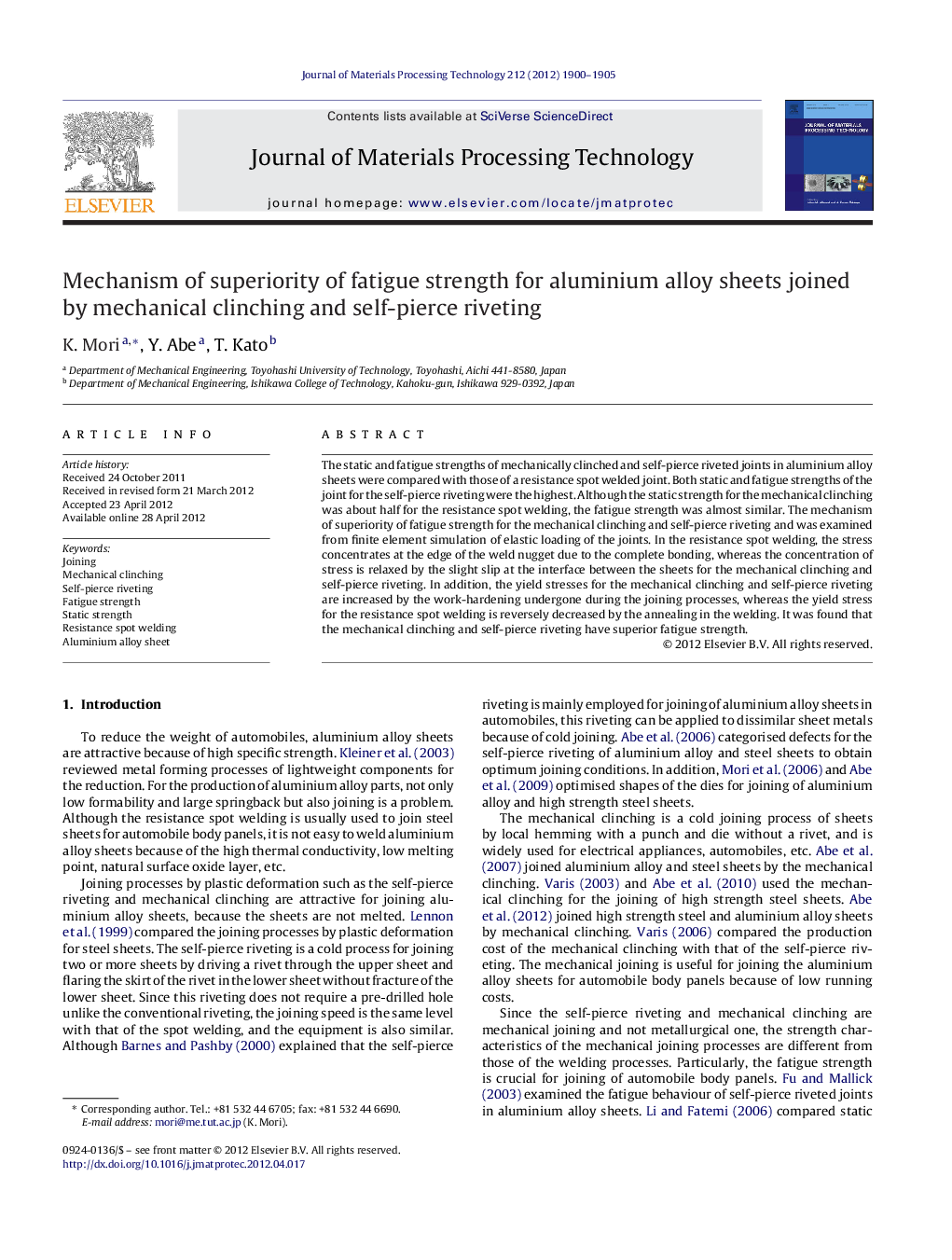| Article ID | Journal | Published Year | Pages | File Type |
|---|---|---|---|---|
| 798222 | Journal of Materials Processing Technology | 2012 | 6 Pages |
The static and fatigue strengths of mechanically clinched and self-pierce riveted joints in aluminium alloy sheets were compared with those of a resistance spot welded joint. Both static and fatigue strengths of the joint for the self-pierce riveting were the highest. Although the static strength for the mechanical clinching was about half for the resistance spot welding, the fatigue strength was almost similar. The mechanism of superiority of fatigue strength for the mechanical clinching and self-pierce riveting and was examined from finite element simulation of elastic loading of the joints. In the resistance spot welding, the stress concentrates at the edge of the weld nugget due to the complete bonding, whereas the concentration of stress is relaxed by the slight slip at the interface between the sheets for the mechanical clinching and self-pierce riveting. In addition, the yield stresses for the mechanical clinching and self-pierce riveting are increased by the work-hardening undergone during the joining processes, whereas the yield stress for the resistance spot welding is reversely decreased by the annealing in the welding. It was found that the mechanical clinching and self-pierce riveting have superior fatigue strength.
